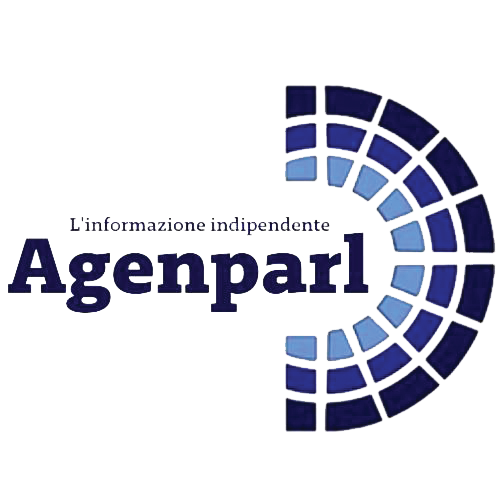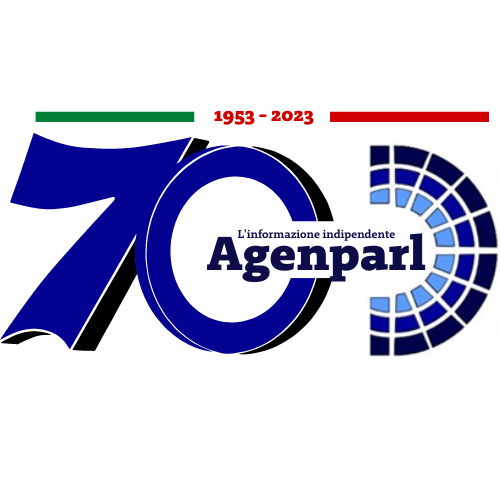 (AGENPARL) - Roma, 18 Luglio 2025
(AGENPARL) - Roma, 18 Luglio 2025(AGENPARL) – Fri 18 July 2025 A weekly compendium of media reports on science and technology achievements
at Lawrence Livermore National Laboratory. Though the Laboratory reviews
items for overall accuracy, the reporting organizations are responsible for
the content in the links below.
LLNL Report, July 18, 2025
LLNL scientists observe the operation of the robot that independently
executes the assays the team uses to assess Novichok inhibition and to
discover new antidotes for Novichok poisoning. (Photo: Blaise Douros/LLNL)
The search for antidotes to poisonous Novichoks
https://www.newswise.com/articles/llnl-and-purdue-university-team-accelerates-the-discovery-of-medical-countermeasures-for-emerging-chemical-threats
In a major advance for chemical defense and public safety, scientists at
Lawrence Livermore National Laboratory’s (LLNL) Forensic Science Center
(FSC) and Purdue University have developed and demonstrated a
high-throughput, automated mass spectrometry platform.
Their platform dramatically accelerates the discovery of medical
countermeasure candidates against A-series chemical warfare agents, also
known as “Novichoks.”
The collaborative research, published in the Proceedings of the National
Academy of Sciences (PNAS), provides the first quantitative data on the
potency of these agents and identifies promising new directions for antidote
development.
A-series nerve agents have gained notoriety in recent years due to their use
in high-profile poisonings. Despite the attention they have received, little
experimental data exists about their biological effects or how best to treat
exposures.
The LLNL-Purdue team addressed this urgent gap by combining expertise in
chemical biology, robotics and advanced mass spectrometry to safely and
rapidly conduct thousands of potential antidote reactions—reaching
throughput rates of up to 7,000 reactions per hour.
Read More
https://www.newswise.com/articles/llnl-and-purdue-university-team-accelerates-the-discovery-of-medical-countermeasures-for-emerging-chemical-threats
LLNL researchers and collaborators from Los Alamos National Laboratory
prepare for an experiment. Every aspect of a NIF shot is checked and
monitored in NIF’s control room.. (Photo: Damien Jemison)
AIming for the perfect shot
https://eepower.com/news/ignition-lab-uses-amazon-ai-to-troubleshoot-nuclear-fusion/
When a tiny misalignment can derail a billion-dollar experiment, precision is
more than a luxury; it’s a necessity. At the National Ignition Facility in
California, where scientists attempt to replicate the reactions that power
the sun by creating fusion, the stakes couldn’t be higher. Every laser shot
demands perfection.
Amazon Web Services (AWS) is stepping in with its powerful generative AI
tools to address these hair-trigger challenges. In partnership with Lawrence
Livermore National Laboratory, AWS aims to embed advanced artificial
intelligence throughout the National Ignition Facility’s (NIF) operations.
This move will enable engineers and scientists to identify anomalies in
real-time, respond more quickly to unexpected issues, and move closer to the
elusive dream of controlled fusion energy.
AWS will apply intelligent search capabilities, large language model-based
chat tools, and retrieval-augmented data systems to help keep experiments on
track. The artificial intelligence system will tap into over 22 years of
NIF’s operational records, acting almost like a highly trained digital
advisor that can coach technicians through troubleshooting at any hour.
Read More
https://eepower.com/news/ignition-lab-uses-amazon-ai-to-troubleshoot-nuclear-fusion/
The diode-pumped solid-state (DPSS) green laser originally developed for
U-AVLIS won LLNL an R&D 100 Award. DPSS lasers are used for precision
machining and many other applications.
Nuclear fuel for the future
https://www.independentnews.com/news/livermore_news/llnl-partners-with-companies-on-plan-to-power-reactors/article_375dae18-9bbe-47c2-83ac-1e5e80b7a94a.html
Nuclear fuel developer Hexium and two companies that build nuclear reactors,
Oklo and TerraPower, announced in late June that they will partner with
Lawrence Livermore National Laboratory (LLNL) to encourage domestic
production of a cleaner fuel for advanced nuclear reactors.
The fuel, High-Assay Low-Enriched Uranium (HALEU), is created when lasers
separate isotopes of uranium. LLNL is involved because it helped develop the
method, Atomic Vapor Laser Isotope Separation (AVLIS), that utilizes the
lasers. Between 1986 and 1999, the U.S. Department of Energy (DOE) assigned
LLNL the role of developing AVLIS technology.
A higher amount of HALEU will help the U.S.’s nuclear power industry move
forward and meet rising demand into the early 2030s. HALEU is also beneficial
because it produces less nuclear waste and allows the developers of nuclear
reactors to design more efficient plants. These plants will be smaller, more
flexible and less expensive than the plants currently in operation.
Read More
https://www.independentnews.com/news/livermore_news/llnl-partners-with-companies-on-plan-to-power-reactors/article_375dae18-9bbe-47c2-83ac-1e5e80b7a94a.html
LLNL and ELI began their partnership with the L3 HAPLS laser system, which
LLNL built and delivered, and ELI now operates.
Prioritizing partnerships in laser tech
https://www.photonics.com/Articles/Lawrence_Livermore_Europes_Extreme_Light/p5/a71209
Lawrence Livermore National Laboratory (LLNL) and the Extreme Light
Infrastructure (ELI) European Research Infrastructure Consortium (ERIC) have
signed a memorandum of understanding that lays the foundation for the
exchange of staff, internship opportunities for students and postdocs, and
the fostering of a culture of knowledge-sharing and intellectual
collaboration. The MOU expands an existing strategic collaboration between
the parties, with a focus on areas such as ultrabright high-repetition-rate
sources for enhanced radiography, fusion, and plasma physics research,
according to James McCarrick, LLNL program director for High Energy Density
and Photon Systems.
“This includes developing technologies with multiple applications such as
high-repetition-rate target systems and diagnostics that can survive
sustained operation close to one of the highest intensity and highest average
power lasers in the world,” he said.
ELI and LLNL have a long-standing partnership. In 2013, LLNL built and
subsequently delivered the L3 HAPLS (High-Repetition-Rate Advanced Petawatt
Laser System) to the ELI Beamlines Facility near Prague, Czech Republic.
Read More
https://www.photonics.com/Articles/Lawrence_Livermore_Europes_Extreme_Light/p5/a71209
Lab seismologist Gene Ichinose looks over an interrogator, an instrument that
allows buried fiber-optic cable to be turned into thousands of virtual
seismometers. (Photo: Blaise Douros)
Tracing the tiniest tickle of ground motion
For over a century, the technology used to measure and monitor earthquakes
has remained largely unchanged, but now scientists are using modern sensors
to get more accurate and widespread information. Reporter Brian Hackney shows
us how fiber lines, the type that give us access to the internet, are helping
Bay Area seismologists.
“We’re at Lawrence Livermore National Laboratory, where we monitor
earthquakes,” said LLNL scientist Gene Ichinose.
Gene Ichinose and Tim Brand monitor them inside this room, using this
machine, the interrogator. The interrogator interrogates the fiber optic
cable that Tim taped to the floor, and even the lightest tap is digitally
recorded. And that’s a big step forward.
Hundreds of miles of fiber optic cable already buried under the Bay Area not
only brings us the internet, it brings us thousands of virtual seismometers
measuring the tiniest tickle of ground motion.
“After we plugged this in, in our experiment, we noticed immediately
vehicles driving around city streets. We saw Caltrain, and then we saw our
first earthquake,” said Ichinose.
Read More https://www.youtube.com/watch?v=DEUnuxVOLfc
——————————————————————————
Founded in 1952, Lawrence Livermore National Laboratory https://www.llnl.gov
provides solutions to our nation’s most important national security
challenges through innovative science, engineering and technology. Lawrence
Livermore National Laboratory is managed by Lawrence Livermore National
Security, LLC for the U.S. Department of Energy’s National Nuclear Security
Administration.
Read previous Lab Report articles online https://www.llnl.gov/news/lab-report
Unsubscribe from this newsletter
